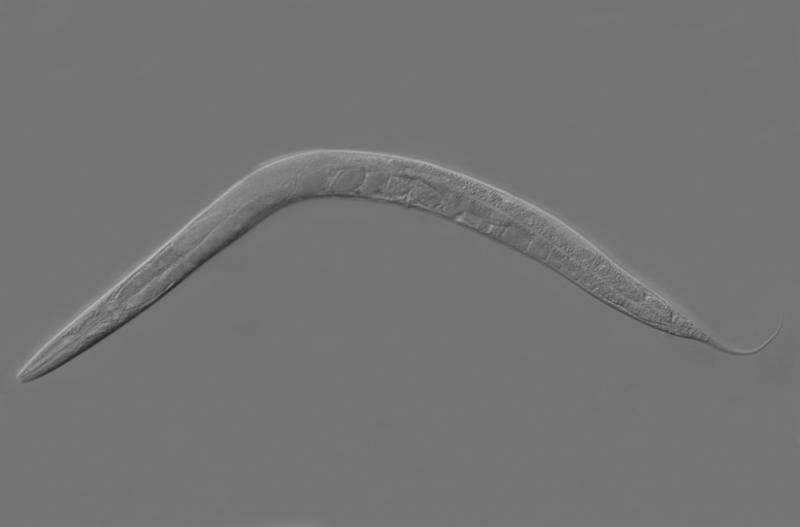November 23, 2017 report
A possible explanation for how germlines are rejuvenated

(Phys.org)—A pair of researchers affiliated with the University of California and Calico Life Sciences, has discovered a possible explanation regarding how human germlines are rejuvenated. In their paper published in the journal Nature, Adam Bohnert and Cynthia Kenyon describe work they have done with worms in their lab and the possible implications their findings may have on human reproduction.
One of the ongoing mysterious surrounding reproduction in humans and most other animals is how the germline stays fresh. Prior research has shown that over time, proteins in a cell become deformed and clump together, which is a major part of the aging process. Also known is that when a cell divides, the damage in it remains in both of the descendants. This suggests that over time such errors should prevent the replication of a species through reproduction—the germ line should become too corrupted. The fact that it does not has been the target of a lot of research and now it seems the researchers in this new effort may have discovered why.
Bohnert and Kenyon chose to work with a tiny worm called Caenorhabditis elegans—it has cell workings that are similar to humans. It also has a reproductive system that was particularly conducive to a study focused on how the germline stays fresh. To reproduce the worm produces eggs that it sends down a tube—at the end of the tube, the egg is fertilized by sperm the worm makes itself. This arrangement allowed the researchers to study the condition of the egg as it made the journey. In watching as the egg traveled, the research pair found that as it neared the sperm, it suddenly cleaned itself by jettisoning clumps of proteins.
Intrigued, the researchers ran several experiments designed to understand what was happening and discovered that it had something to do with the sperm. A closer look revealed that the sperm was actually releasing a chemical that was absorbed by the egg. Once the signal was received, the egg began a process of cleansing that started with the formation of lysosomes—little bubbles with fingerlike projections that pulled on the protein clumps causing them to tear apart. The cells then ejected the remnants.
It is not known if the same process occurs in humans, but some initial work by the team has suggested that it is likely the case. If so, that would finally solve the mystery of how the germline is rejuvenated.
More information: K. Adam Bohnert et al. A lysosomal switch triggers proteostasis renewal in the immortal C. elegans germ lineage, Nature (2017). DOI: 10.1038/nature24620
Abstract
Although individuals age and die with time, an animal species can continue indefinitely, because of its immortal germ-cell lineage. How the germline avoids transmitting damage from one generation to the next remains a fundamental question in biology. Here we identify a lysosomal switch that enhances germline proteostasis before fertilization. We find that Caenorhabditis elegans oocytes whose maturation is arrested by the absence of sperm exhibit hallmarks of proteostasis collapse, including protein aggregation. Remarkably, sperm-secreted hormones re-establish oocyte proteostasis once fertilization becomes imminent. Key to this restoration is activation of the vacuolar H+-ATPase (V-ATPase), a proton pump that acidifies lysosomes. Sperm stimulate V-ATPase activity in oocytes by signalling the degradation of GLD-1, a translational repressor that blocks V-ATPase synthesis. Activated lysosomes, in turn, promote a metabolic shift that mobilizes protein aggregates for degradation, and reset proteostasis by enveloping and clearing the aggregates. Lysosome acidification also occurs during Xenopus oocyte maturation; thus, a lysosomal switch that enhances oocyte proteostasis in anticipation of fertilization may be conserved in other species.
Journal information: Nature
© 2017 Phys.org





















